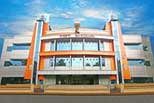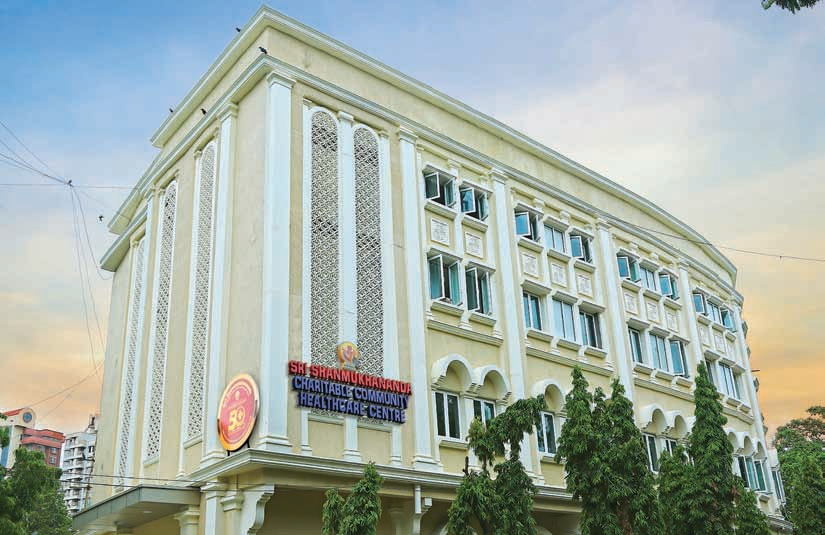 |
 |
 |
|
BOARD OF TRUSTEES & ACTIVITY CENTERS
|

|
|
Centenary celebration of Mridangam maestro
Dr. T. K. Murthy


Sri Shanmukhananda Sabha celebrates the
commencement of the Centenary celebration of Mridangam maestro Dr. T. K. Murthy on
13.8.2023
The Sri Shanmukhananda Fine Arts & Sangeetha Sabha, Mumbai celebrated the commencement of
the centenary of Dr. T. K. Murthy on 13th August 2023 at Mumbai witnessed by about 50
members of his family and relatives, 18 disciples who had come all the way from Chennai and
countless number of Rasikas in Mumbai. It was on this very day, he was born in the year
1924. Various religious ceremonies were performed in the morning hours for longevity, good
health for Dr. T. K. Murthy. The Sabha conferred its highest award, the Sangeetha Kala
Vibhushan on him in the evening. His disciples from Chennai gave a memorable Thala Vadhya
Kutcheri in honour of their Guru.
Mridangam traces its history to the Bull God Nandi, escort of Lord Shiva. Nandi used to play mridangam during Shiva Tandavam. In view of its hoary lineage, mridangam is also called Deva Vaadyam. Over 2000 years of recorded history shows this percussion existing in our country. Mrid (clay or earth) and Ang (body) form Mridangam. Early mridangam was made of hardened clay. Today its body is constructed with wood from the jackfruit tree. Mridangam is also called Tannumai. With the development of Mridangam came the Thala (rhythmic system). Mridangam became an integral part of classical Carnatic music in the last century. Doyens in the field Palani Subramania Pillai, Palaghat Mani Iyer and C. S. Muruga Bhoopathy, often referred to as the Trinity of Mridangam elevated the instrument to its present stature. Age is a case of mind over matter, if you don’t mind it, it does not matter said Mark Twain. Dr. Thanu Krishnamurthy would happily agree. At 99, he continues to teach students spread across the globe, occasionally performs on the stage and even composes moras and korvais. Dr. Murty started his training under Thanjavur Vaidhyanatha Iyer, the founder of Thanjavur style of Mridangam when he was just 9 years old. He continued to stay with Vaidhyanatha Iyer as his adopted son till his death. His Guru affectionately called him Chittu as his fingers moved swiftly like a Chittu Kuruvi (Sparrow). It was Palghat Mani Iyer who shortened his name to T. K. Murthy in 1937. This happened during a concert at Rasika Ranjani Sabha, Mylapore. Musiri Subramania Iyer was accompanied by Papa Venkatram Iyer on the Violin, Mani Iyer on the Kanjira and Murthy on the Mridangam. The Sabha came up with a poster in the shape of a clock in the numbers 12, 3, 6 and 9. They wrote each artiste name. Krishnamurthy’s name was too long to fit and Mani Iyer made it T. K. Murthy and the name stuck. Murthy played for almost all the musicians in the last 90 years. Accompanying Alathur Brothers was challenging as they sang Pallavis with a lot of Kanakkus. For example, Panchanada Pallavis. He loved playing for Semmamgudi and liked his Kala Pramanam. A huge cake of 100 years was cut by Dr. T. K. Murthy and was distributed to the young students of the Sabha’s Sangeetha Vidyalaya. In his felicitation reply, Dr. Murthy profusely thanked the Sabha for this rare honour of celebrating his 100 years in a manner not ordinarily seen and that only the Shanmukhananda Sabha can do it. He was confident that he would come back the next year for the celestial Poornabhishekam and Swarna Kanakabhishekam and all other religious ceremonies that the Sabha has agreed to perform on his Century of Bliss. |
|
|

|

